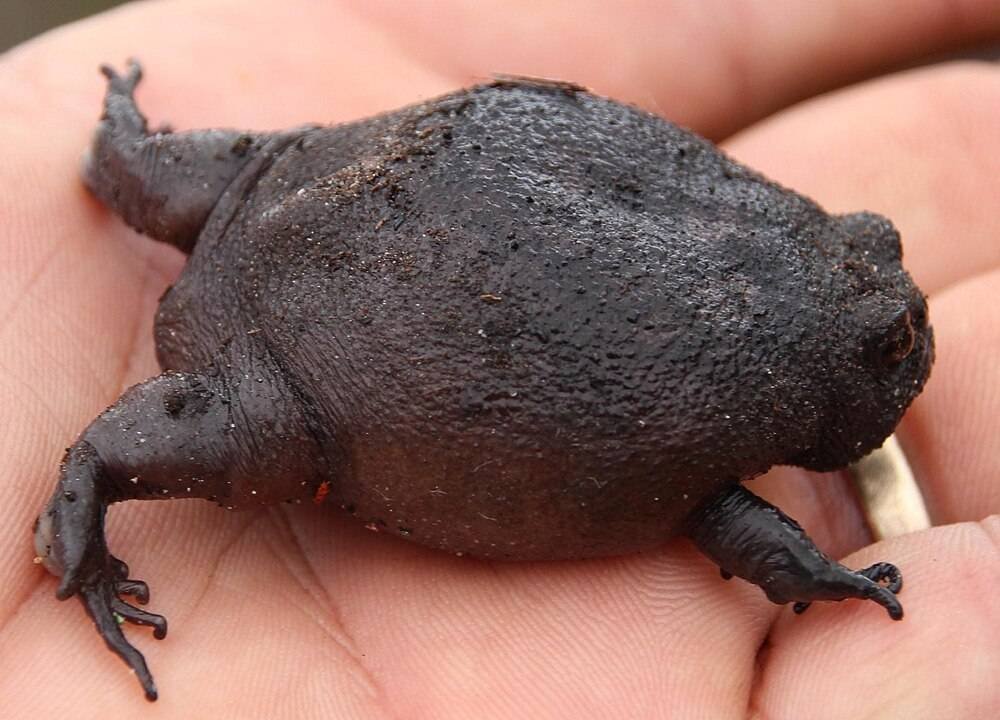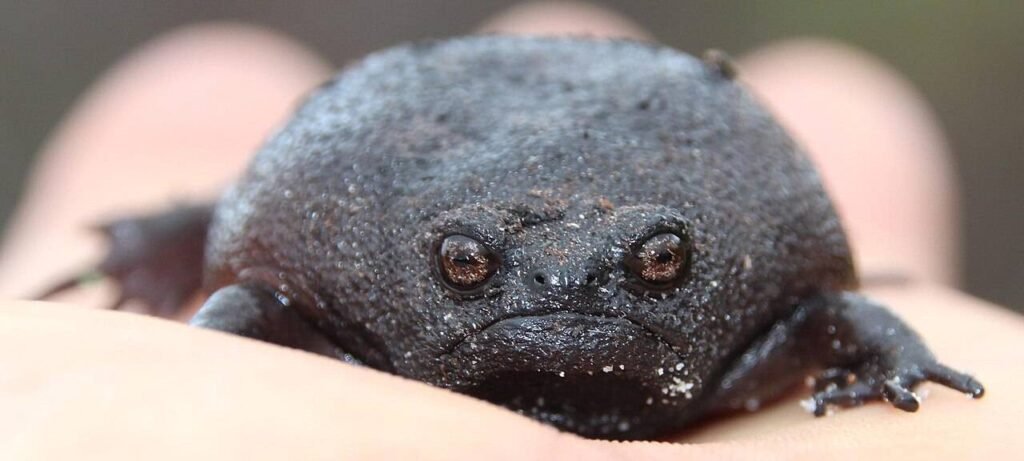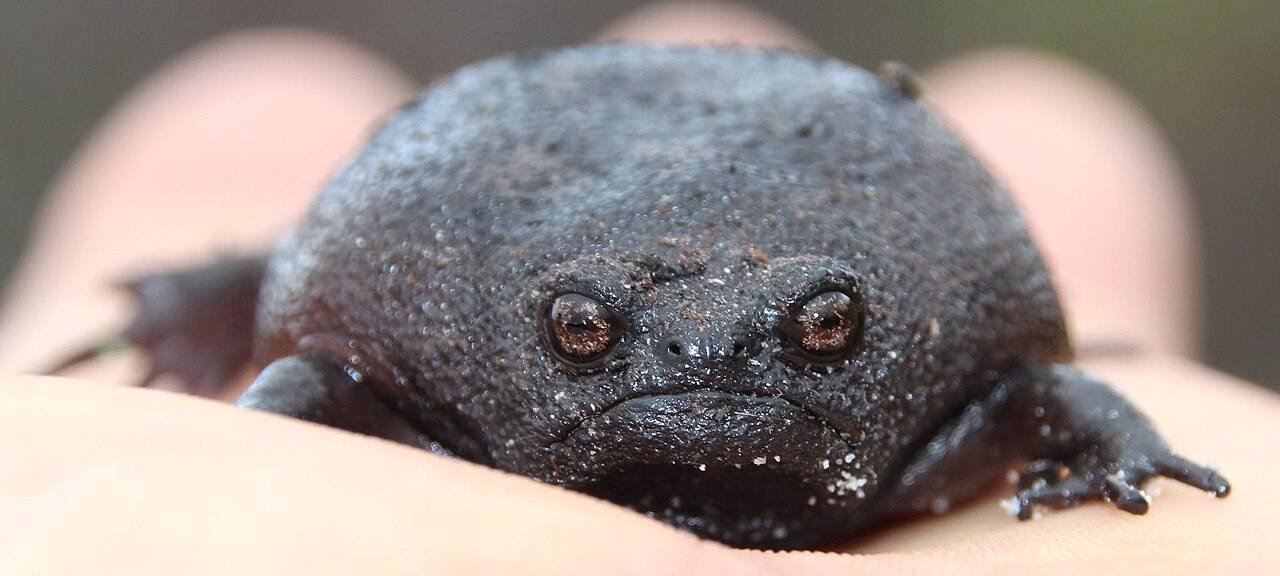Table of Contents
Introduction
Characteristics and Appearance
Unique Traits and Behavior
Habitat and Distribution
Diet and Feeding
Reproduction and Lifecycle
Conservation Status
Conclusion
Introduction
The Black Rain Frog, scientifically known as Breviceps fuscus, is an intriguing amphibian native to the Southern Cape of South Africa. Known for its distinctive appearance and unique habitat preferences, this small yet fascinating creature draws interest from researchers and nature enthusiasts alike. Let’s delve into the world of the Black Rain Frog, uncovering its characteristics, behavior, and conservation status.Characteristics and Appearance
The Black Rain Frog is aptly named for its predominantly dark, almost black, coloration which helps it blend seamlessly into the moist, mossy environments it calls home. These frogs possess a stout, rounded body with a flattened snout, giving them a somewhat grumpy appearance. Their skin is covered in small, granular bumps, adding to their distinct texture and aiding in camouflage. Adult frogs typically measure around 2 to 3 inches in length, making them relatively small yet robust in build.

Unique Traits and Behavior
One of the most captivating traits of the Black Rain Frog is its ability to puff up its body when threatened. This defense mechanism is used to deter predators, creating the illusion of being larger and more formidable. Additionally, these frogs are known for their burrowing habits, spending a significant amount of time in underground burrows, which they dig themselves using their strong hind limbs.Despite their name, Black Rain Frogs do not necessarily require rainfall for their daily activities. Instead, they thrive in areas with high humidity and consistent moisture, often found in the fynbos and forested regions of their native habitat.
Habitat and Distribution
The Black Rain Frog is endemic to the Southern Cape of South Africa, where it inhabits the fynbos biome—a unique shrubland ecosystem characterized by its rich biodiversity and Mediterranean climate. These frogs prefer sandy soils for burrowing and are typically found at elevations ranging from sea level to mountainous areas, demonstrating remarkable adaptability to varying conditions within their limited range.Diet and Feeding
As opportunistic feeders, Black Rain Frogs consume a variety of small invertebrates, including insects, worms, and other tiny arthropods. Their diet is influenced by the availability of prey within their habitat, relying on their keen sense of smell and nocturnal activity to hunt effectively during the night.Reproduction and Lifecycle
The reproductive habits of Black Rain Frogs are just as fascinating as their appearance. Breeding typically occurs during the rainy season, when males call from their burrows to attract females. Once a female chooses a mate, she enters the male’s burrow to lay her eggs. The male then guards the eggs diligently until they hatch, a behavior that is relatively rare among amphibian species.The developing froglets skip the free-swimming tadpole stage, emerging from the eggs as fully formed miniature frogs—a reproductive strategy known as direct development, which offers additional protection from aquatic predators.
Conservation Status
While the Black Rain Frog is not currently classified as endangered, habitat loss due to agricultural expansion and urban development poses significant threats to its population. Conservation efforts focus on preserving the delicate fynbos ecosystem, which is crucial for the survival of this and many other unique species. Protecting these habitats involves sustainable land management practices and raising awareness about the importance of biodiversity in the region.Conclusion
The Black Rain Frog exemplifies the resilience and adaptability seen within the amphibian world. Its distinctive traits and survival strategies in the fynbos biome of South Africa highlight the incredible diversity of life that thrives even in specialized habitats. Much like the Darwin’s Frog with its unique mouth-brooding, or the various poisonous frogs known for their vivid warning colors and toxins, the Black Rain Frog contributes to our understanding of amphibian adaptations.
These unique frogs, alongside captivating frog jokes and frog-themed stories, illustrate the fascinating interplay between biology and folklore, inspiring both scientific exploration and cultural tales. By learning about these remarkable creatures and their roles within their ecosystems, we deepen our appreciation for the delicate balance of nature and the need for its conservation.
Whether intrigued by their biology or charmed by the tales they inspire, the Black Rain Frog and its fellow amphibians serve as poignant reminders of the importance of protecting our natural world.
FAQs About the Black Rain Frog
- What is the scientific name of the Black Rain Frog?
The scientific name is Breviceps fuscus. - Where can Black Rain Frogs be found?
They are native to the Southern Cape of South Africa. - What is unique about the appearance of Black Rain Frogs?
They have a distinctive stout body, flattened snout, and are predominantly dark in coloration aiding in camouflage. - How do Black Rain Frogs protect themselves from predators?
They puff up their bodies to appear larger and more daunting to potential predators. - What is the preferred habitat of Black Rain Frogs?
They inhabit the fynbos biome, characterized by sandy soils and high humidity. - What do Black Rain Frogs eat?
Their diet consists of small invertebrates such as insects and worms. - How do Black Rain Frogs reproduce?
They breed during the rainy season, with females laying eggs in burrows that males guard until hatching. - What is direct development in Black Rain Frogs?
It is a reproductive strategy where froglets develop directly from eggs, bypassing the free-swimming tadpole stage. - Are Black Rain Frogs endangered?
They are not currently classified as endangered, but habitat loss poses a threat to their populations. - Can Black Rain Frogs be kept as pets?
While it’s possible, they require specific environmental conditions that mimic their natural habitat, making it a challenge for most.

